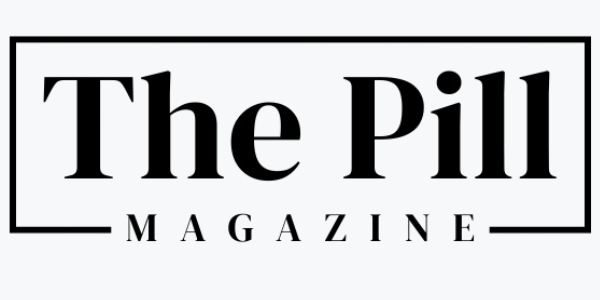The start of a new year is a great moment to look at how your firm keeps and engages its personnel. New trends in employee benefits show how priorities are changing, such as financial wellness, personalized benefit solutions, employee well-being, and support for remote and hybrid work models.
These popular employee benefits could help you understand what workers need and how to get them to sign up for benefits that match those demands.
To keep the best workers, companies need to be smart and deliberate about perks. Companies can get the best workers and build a strong workforce for 2025 and beyond by giving benefits that are competitive, customized, and focused on the future.
Here we are going to look at the most popular techniques, technology, and new goals that are affecting benefits administration this year.
Why Benefits Administration Is Evolving Now
Employers are quickly coming to terms with the fact that the traditional rules for managing benefits don’t work anymore. Rising healthcare expenditures, a greater need for personalization, and stricter government oversight are all important elements in the progression. Check out the numbers below:
- In the past year, 63% of companies changed at least one of their benefits policies because of new laws.
- Surveys of the workforce suggest that there are an average of 216 core and optional benefits available, which is a 23% increase from 2023.
These numbers show that benefits administration needs to become more flexible, tech-driven, and focused on employees.
Personalization and Flexible Benefits Packages
As the workforce gets increasingly ethnic and intergenerational, employees are starting to want benefits that are more tailored to their needs.
Companies that offer more tailored, menu-based methods have claimed participation rates of 94%, while typical packages have substantially lower rates. The huge surge in flexible benefits plans not only makes people happier and more likely to use them, but it also cuts down on needless expenditure on things that aren’t being used.
New Choices Include:
- LSAs (lifestyle spending accounts)
- Leave for grandparents and menopause
- Health insurance that can be changed and optional perks
- Stipends for family care, telemedicine, and wellness apps
Integration of AI and Data Analytics
Advanced analytics and AI are changing every part of managing benefits. Managed Benefits Services now uses AI-powered tools to look at employee data on a regular basis to guess what they want, help them make decisions during enrollment, and provide them real-time recommendations. Benefits for HR Teams:
- 65% of HR leaders think AI is very important for increasing productivity and cutting costs.
Financial Wellness and Holistic Well-Being
In 2025, there will be a big change from only health treatment to overall wellness, which includes mental, emotional, and financial health. Financial wellness programs, which include things like help with student loans and emergency savings accounts, are increasingly a common feature of Employee Benefits Administration Services. Main Trends:
- Three out of four workers say that personal debt is a major source of stress that affects their work.
- Financial education, debt counseling, and savings instruments that can be used in many ways are all growing at double-digit rates.
- Mental wellness applications, stress management tools, and flexible health spending accounts are all part of holistic well-being now.
Enhanced Technology and Mobile-First Benefits Access
Managing Benefits Software development is moving quickly, with a focus on cloud-based, mobile-friendly platforms that are easy to use. Employees want to be able to look at, sign up for, and manage their benefits from any location and at any time. Information about the industry:
- 70% of workers would rather use digital self-service portals to manage their benefits.
- Mobile access is currently one of the top three most sought features in systems for managing benefits.
- Top companies are betting significantly on chatbots, multilingual assistance, and mobile app interfaces that work without problems.
Employee-Centric Experience and Support
Modern benefits administration systems now put a lot more attention on how employees feel about their jobs. Self-service decision tools, real-time support (such live chat and AI bots), and personalized learning modules all help people become involved and use the products. What workers want:
- Benefits explanations that are easy to understand and don’t use jargon
- Videos that explain things and education on demand
- Access from a desktop, tablet, or phone all in one place
- Help for workers in different places, jobs, and age groups
Compliance and Regulatory Adaptability
With more and more federal, state, and even global rules, it’s harder than ever to follow the rules. Automated compliance tracking and adaptability are becoming essential parts of modern Employee Benefits Administration Services.
- Compliance Features Include: automatic updates for new state rules, ACA, HIPAA, COBRA, Paid Family Leave, and more.
- Document management that brings together mandatory notices, plan summaries, and enrollment records.
- Alerts in real time on deadlines, eligibility, and reporting cycles.
Hybrid and Remote Work Considerations
The rise of remote and hybrid work has changed the rules for benefits. HR staff now have to make sure that workers who work in different places, often in separate states or countries, are treated the same way. Big Effects:
- 98% of workers want to be able to choose where and how they work.
- Companies that pay for home office equipment, wellness, and internet access are the best employers.
- As talent pools are bigger, global health, “borderless” support, and equal access are very important.
Focus on Employee Feedback & Data-Driven Design
Leading HR teams use regular feedback, pulse surveys, and usage statistics to constantly improve their benefits packages. Real-time information from decision support tools and enrollment journeys makes it possible to develop plans that are more flexible and responsive. Important Things to Do:
- Regular surveys help make things better all the time and change what is offered to meet employee needs.
- Decision assistance tools keep track of options and bring out problems.
- HR will use data dashboards to keep an eye on engagement, participation, and the return on investment for perks.
Interoperability and Integrated Ecosystems
Benefits systems that are separate from each other are gradually becoming out of style. There is a lot of need for systems that work effectively with payroll, HRIS, and wellness, learning, or recognition platforms. Advantages of Integration:
- It gets rid of duplicate data entering and lowers the chance of making mistakes by hand.
- Allows for consistent reporting and analysis over the full employee lifecycle.
- Makes onboarding, open enrollment, and managing life events easier.
Emerging Technologies Shaping the Future
The next step in Benefits Administration Software development is to use technology like:
- AI chatbots to help employees right away.
- Using predictive analytics to make plans better.
- IoT (Internet of Things) for keeping an eye on health.
- Blockchain provides safe, verifiable claims and document trails.
- Quantum computing for better modeling of risks and finding fraud.
Final Thoughts
Hopefully, you are clear about the benefits administration will be flexible, personalized, tech-savvy, and always focused on the employee experience. HR teams need to find a way to manage costs while also being flexible and following the rules. They may do this by using Managed Benefits Services to meet these growing needs. Companies are not just satisfying their legal and workforce duties by adopting these trends, such as AI-powered analytics, interconnected ecosystems, feedback-driven design, and mobile-first solutions. They are also becoming the best employers in a job market that is becoming more competitive.






